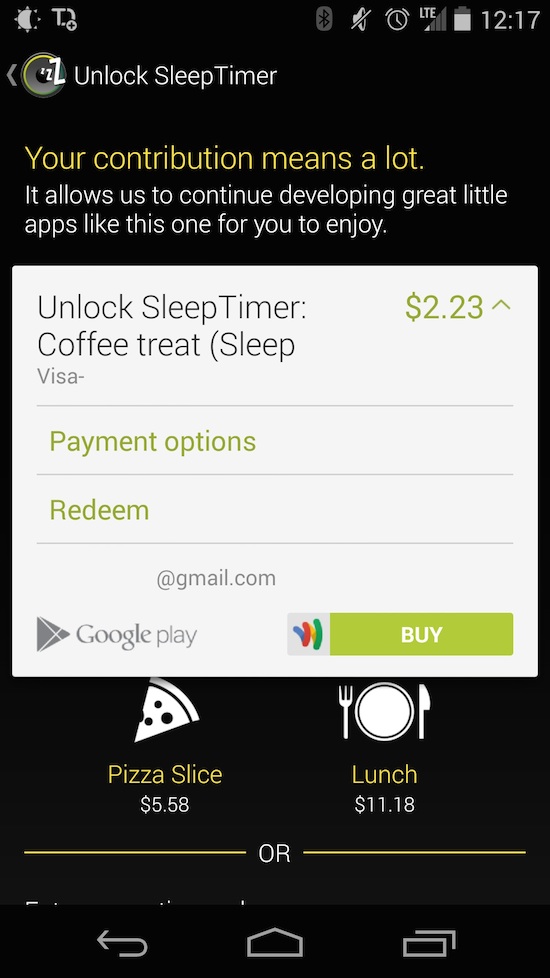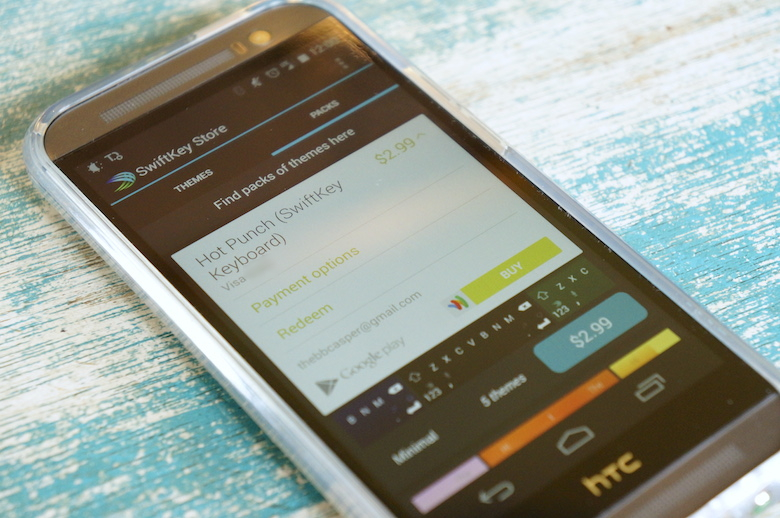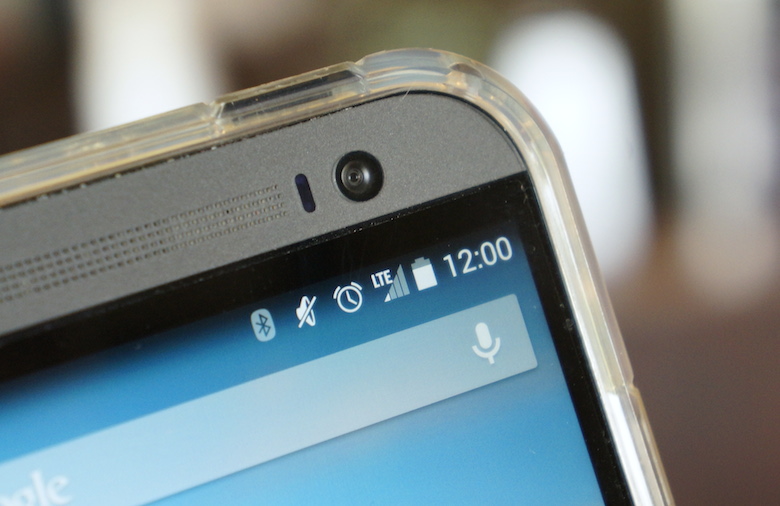For the past week, we’ve been talking about all the new and shiny things in the upcoming Android Lupdate.
Yesterday, I installed the developer preview on the company Nexus 5, played with it off and on for a few hours, cross-checked all the new features with the old, wrote a script, and made a comparison video showing off how, at the end of the day,Android L and iOS 8 are actually very much alike.
Frankly, I really like the new look of Material Design, the new Recent Apps menu is slick, all animations are buttery smooth, and there’s not much to dislike about the new UI. The shade animations when you hit the top or bottom of a scrolling list is still a little odd. But honestly, it’s a solid UI update that brings new functionality and fixes some of the idiosyncrasies of older Android versions.
However, Google didn’t fix all the issues. I still have a few personal gripes with Android – some big, some small. Read on to see what Google hasn’t fixed yet.
An in-app purchase nightmare
On iOS or Windows Phone, you can only ever login to a single account to purchase applications at any given time. You can’t sign into two separate iTunes accounts at the same time and choose between them at the time of purchase. The same goes for Live accounts in Windows Phone. You choose one login and stick with it, unless you need to switch. In that case, you logout of the first account and login to the second.
Having the ability to switch accounts on the fly is a very useful feature of Android. But it’s also a bit cumbersome and confusing at times.
 It isn’t difficult to keep track of which account I’m actively using. From within Google Play, open the left menu and it will show you which account you’re currently operating under. To switch to another account, simply tap the drop-down menu and choose from the additional accounts. Simple.
It isn’t difficult to keep track of which account I’m actively using. From within Google Play, open the left menu and it will show you which account you’re currently operating under. To switch to another account, simply tap the drop-down menu and choose from the additional accounts. Simple.
The confusing part is keeping track of which applications you purchased under various accounts. I didn’t pay a lot of attention back in the day and most of my Google Play purchases are split fairly evenly between two of my Google accounts – movies, games, books, etc.
Keeping track isn’t really necessary, though. If you’re logged into both accounts in Google Play, you can download any application you’ve purchased, no matter which account you’re currently operating under.
However, the tricky part comes with in-app purchases. I’ve bought several in-app purchases – a subscription for Todoist, filter packs for VSCO Cam,the Creative unlock for JotterPad X, etc. Once you download these apps and restore the purchases once, you’re good until you wipe the phone or switch phones; therefore, it’s not really much of an issue for someone who switches phones every two or three years.
However, I’m constantly switching phones, reviewing different devices, and setting up new phones. And at least nine times out of 10, I find myself almost pulling my hair out. It seems as if the system chooses at random which account you’re logged into when you go to buy or restore previous in-app purchases. No amount of switching accounts within the Google Play store will change the account the app defaults to for in-app purchases – and it’s not always automatically your primary account or the first one you logged into.
I’m sure there’s some way to know which one it defaults to – maybe the account you were using when you downloaded the app. But even deleting the app, switching accounts, and re-downloading the app doesn’t solve the problem. The only way to manually choose which account your phone uses for in-app purchases is to log out of all other Google accounts, restore or buy the in-app purchase, and log back in to all other accounts.
It’s frustrating, to say the least, especially when you have to do it every other week and sometimes more often.
Battery guestimation
Battery life is something I regularly struggle with – more than most, for whatever reason. Battery life on all my phones is notoriously bad. I’ve tried all kinds of fixes and workarounds to improve my battery life. I regularly monitor and research kernel wakelocks, I Greenify problematic apps, and do a lot of other things I shouldn’t have to do as a basic end user.
Nothing ever seems to help at all.
Still, I’m hopeful Project Volta will have as much success as Project Butter did. The battery saver mode, more in-depth info on what’s destroying your battery life, and supposed efficiency improvements are all promising.
Somehow, though, Google has still failed to incorporate something as simple as a battery percentage display in the status bar. This is the first thing I switch on when setting up a new iOS, LG, or Samsung device. And it’s the first thing I miss every time I switch back to stock Android.
Google Voice integration
Finally – and this is a big one – Google Voice.
Google has apparently forgotten about it’s free SMS, voicemail, and call forwarding service. The application hasn’t received a notable update in ages and Google recently killed off the APIs, rendering all the third-party clients useless. I used these apps – like GrowlVoice for Mac – regularly.
Back in March, word on the street was that Google would kill off Google Voice as a standalone service and integrate it with Hangouts. So far, it’s only half integrated with Hangouts. You can receive Google Voice calls via the Hangouts Chrome extension on desktops, and you can place Google Voice calls using the iOS Hangouts app. And despite SMS integration with Hangouts on Android, Google Voice integration is nowhere to be found.
Here’s hoping Google finally delivers.
With no third-party support and the outdated stock apps, Google Voice is quickly losing its utility and importance in my life.
What say you?
Has Google overlooked something you were hoping it would include in the next major Android update? What is Android L missing that you’d love to see fixed? Sound off with your thoughts below!




No comments:
Post a Comment